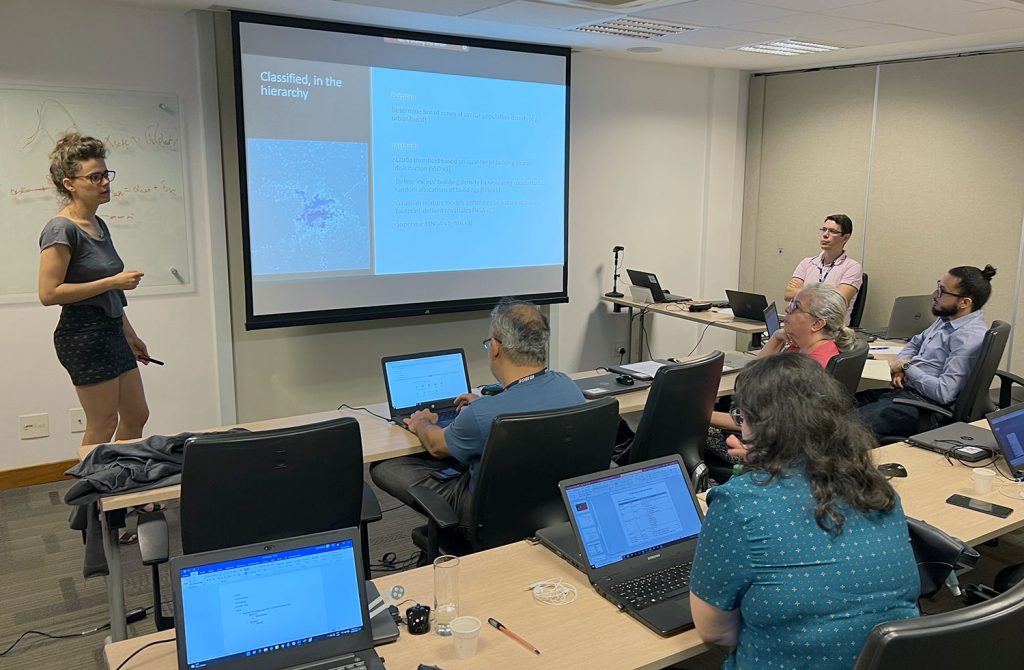As Brazil prepares for its biggest ever census, WorldPop Research Fellow Edith Darin presented on bottom-up population modelling last month as part of a two-week workshop at the Instituto Brasileiro de Geografia e Estatística (IBGE, the Brazilian Statistics Office) in Rio de Janeiro.
Edith’s contribution came at an important milestone for the IBGE. In August over two hundred thousand surveyors will travel across Brazil’s diverse 8.5 million square kilometre terrain to collect baseline information on a population estimated at nearly 215 million. This type of census is the biggest data collection exercise that can be undertaken by any national statistics office and is the backbone of national statistics systems. It is a resource-intensive exercise and it is crucial to closely monitor data collection to ensure the best data quality is gathered by census enumerators. To work effectively enumerators need to have a good estimate of the number of people they would be expected to interview in each enumeration area (EAs). How to achieve this estimate using bottom-up population modelling was the focus of Edith’s presentation.

In her presentation Edith focused on how the bottom-up approach may be adapted to the Brazilian context. Bottom-up population modelling leverages up-to-date remote sensing products (like satellite imaging and incomplete but recent household survey data) to predict population numbers in specific areas at high-resolution. This enables census planners to develop accurate enumeration areas which allow surveyors to work efficiently as they collect data.

As the IBGE maintains a comprehensive register of buildings and households that is regularly updated by fieldwork, they can use this unique database to play a vital role unlocking the population predictions necessary for creating more accurate EAs. As August approaches, the IBGE are adopting this approach as it plans for what will be the biggest national census in its history.
Find out more about bottom-up population modelling:
- Modelled Population Estimates – a UNFPA webinar focusing on WorldPop’s work with national statistics offices.
- Statistical population modelling for census support – A tutorial on implementing the population model using R.
- National population mapping from sparse survey data: A hierarchical Bayesian modeling framework to account for uncertainty – An academic paper authored by members of our team.
- Population modelling – a GRID3 Global webinar.



